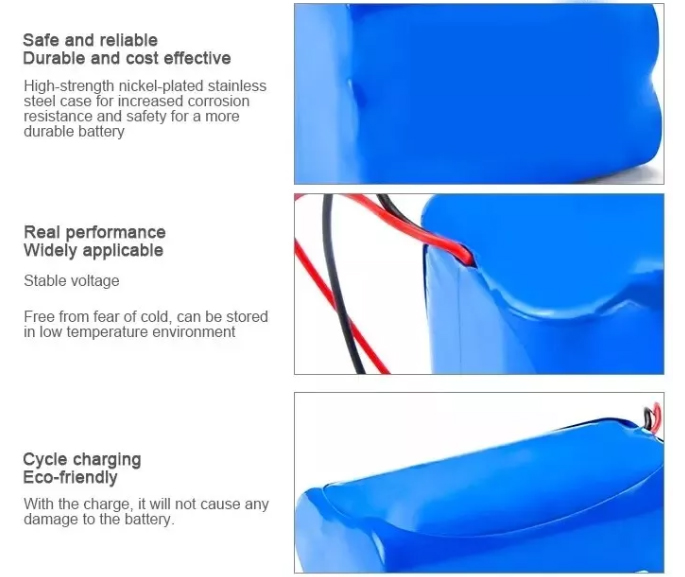Consulting phone:
135-3037-2041
(Mr.Wang)
Product introduction:
The small module Faraday capacitor module is a hybrid electrochemical energy storage device that combines the embedding mechanism of the lithium-ion battery anode and the double-layer mechanism of the double layer capacitor (EDLC) cathode. The combination of negative electrode type LTO electrode and positive electrode capacitor type activated carbon (AC) results in an energy density of approximately. 20Wh/kg, approximately 4-5 times that of a standard double layer capacitor (EDLC). However, power density has been proven to match EDLC as it can fully discharge within a few seconds. On the negative electrode (anode) of activated carbon, charges are stored in a double layer formed at the interface between the electrode and electrolyte. Like EDLC, the voltage of LIC varies linearly, which increases the complexity of integrating them into systems with power electronic devices that expect more stable battery voltage. Therefore, LICs have a high energy density, which varies with the square of the voltage. The capacitance of the anode is several orders of magnitude larger than that of the cathode. Therefore, the change in anode potential during the charging and discharging process is much smaller than the change in cathode potential.
Product specification:
| project | characteristic |
| Rated voltage | 12V or customized |
| capacity | 2.5F or customized |
| Operating temperature | - 40 ℃ - 65 ℃ |
| Tolerance | 0+20% |
| Size | 30*30*23.5mm |
| Wire length | 19.18G |
| Temperature characteristic | rom - 40 ℃ to 65 ℃ Capacity change: 30% of △ c ∠ initial measured value @ 25 ℃ Internal resistance change: 100% of △ ESR ∠ nominal valuef |
| High temperature load life | 25 ℃ and rated voltage, 1000h load capacity change: 30% of △ c ∠ initial measured value @ 25 ℃ internal resistance change: 200% of △ ESR ∠ nominal value |
| Normal temperature load life | 10 year capacity change of load under 25 ℃ and rated voltage: 30% of △ c ∠ initial measured value @ 25 ℃ internal resistance change: 200% of △ ESR ∠ nominal value |
| Under the normal temperature cycle life | of 25 ℃, the capacity change after 500000 charge discharge cycles (from rated voltage to 1/2 rated voltage): 30% of the initial measured value of △ c ∠ @ 25 ℃ internal resistance change: 200% of the nominal value of △ ESR ∠ |
Product Display:



Main features of the module
◎ Long life, hundreds of thousands of times of charging;
◎ Fast charging speed Charging only takes 0.3s-15min;
◎ High charging and discharging efficiency Charging and discharging efficiency can reach 98%;
◎ High power density
◎ Wide operating temperature range, which can be used within the temperature range of - 40 ℃~+65 ℃;
◎ Good ultra-low temperature characteristics, can work in the environment of minus 40 ℃;
◎ Completely maintenance free;
◎ No environmental pollution, green environmental protection;
Product application:
Fast charging application, charging in seconds, discharging in minutes. For example, electric tools, electric toys; In the UPS system, the super capacitor provides instantaneous power output as a supplement to the standby power supply of the engine or other uninterruptible systems; Applied to energy sources with sufficient energy and insufficient power, such as solar energy; Power support when the bus switches from one power source to another; Low current, continuous discharge for a long time, such as computer memory backup power supply.


matters needing attention:
1、 Use
1. The operating temperature of lithium ion capacitor should not exceed the upper or lower limit of rated temperature (- 20 ℃~+55 ℃)
2. Lithium ion capacitors shall be used at nominal voltage. In order to prolong the service life of the product, we recommend that the monomer be used within the range of "rated voltage" (2.5v-3.8v).
3. Before using the lithium ion capacitor, please acknowledge the polarity and prevent reverse connection.
4. The external ambient temperature has a weight impact on the life of the lithium ion capacitor. Please keep away from heat sources.
5. Do not touch water, oil, acid or alkali directly.
6. Do not knead, nail or disassemble the lithium ion capacitor
7. Do not discard the lithium ion capacitor at will, and dispose it according to the national environmental protection standards.
2、 Storage
1. During transportation, the lithium ion capacitor shall be handled with care to avoid violent vibration, kneading, rain and chemical corrosion.
2. The lithium ion capacitor shall not be located in a place with a relative humidity of more than 85% or containing toxic gas. In such an environment, the lead and shell are prone to moisture and corrosion, which may cause the circuit break of the ultrafast charging battery.
3. If the lithium ion capacitor needs to be stored for a long time, please store it in a place with excellent ventilation and temperature of - 40~35 ℃ and relative humidity below 50%.